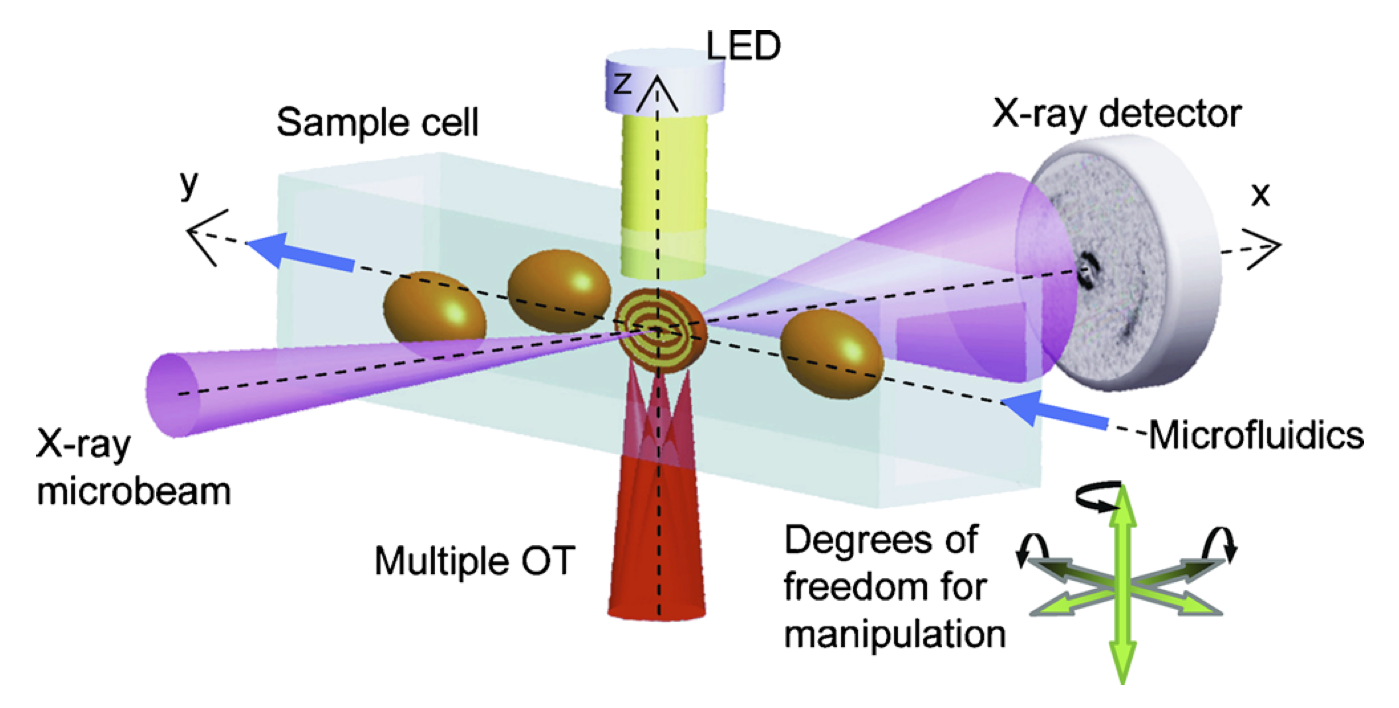| Optical control of resonant Auger processes |
|
Optical lasers are extensively used to control the populations of low-energy atomic and molecular states, i.e., coherent control of valence electronic states and molecular vibrational and rotational motions. We are exploring the use of optical lasers to control x-ray and inner-shell processes. Despite the short lifetime of a K-shell hole in Ne (2.4 fs), we have demonstrated theoretically and experimentally that an intense, 800-nm laser field can couple core-excited states, e.g., transfer population from the 1s-13p to the 1s-13s state. In further theoretical work, we have demonstrated that this population transfer will be manifested in the resonant Auger electron spectrum (see Fig. 1). The simulations also show that the angular anisotropies of the Auger electrons will be imprinted on the sidebands that arise when continuum electrons interact with an optical field. As XFEL sources mature and control increases over pulse properties, it is expected that highly-coherent x-ray pulses will allow population control of core-excited resonant states, as illustrated in Fig. 9(a). Our simulations demonstrate how this capability can be combined with optical lasers for coherent control of x-ray and inner-shell transitions. Asymmetries in sidebands will appear due to interference between different multiphoton quantum paths taken by Auger electrons (see Fig. 9(b)). The asymmetries are very sensitive to the x-ray and optical parameters due to the intrinsic coherence of the process. The effects can be applied to future pump-probe experiments, optical control schemes of x-ray absorption, and x-ray pulse characterization in XFELs. |
| X-ray diffraction imaging of optically trapped micro- and nano-particles |
| Coherent x-ray diffraction imaging (CXDI) is a sensitive method for imaging crystalline and noncrystalline materials at high spatial resolution. A major barrier to applying CXDI to freestanding micro- and nano-scale objects is their tendency to freely move within the intense beam of the APS. Typically such objects must be securely bonded to a substrate, which can alter their internal structures. A solution to this problem may be to hold the object in optical trap. A sketch of such a setup is shown in Fig. 10. Our optical trapping setup contains a built-in light detector that is able to measure the displacement of trapped particles with sub-nanometer accuracy. We have used it to record optical images of several types of nanoparticles. The trap will be installed at the CXDI beamline 34-ID-C. Our prototype sample will be zinc oxide microcrystals which have been extensively studied with CXDI and have also been stably trapped in our optical tweezers. Successful implementation of optical tweezers for sample alignment and orientation will enable an entirely new class of samples to be studied with CXDI including fully hydrated biological samples. |


